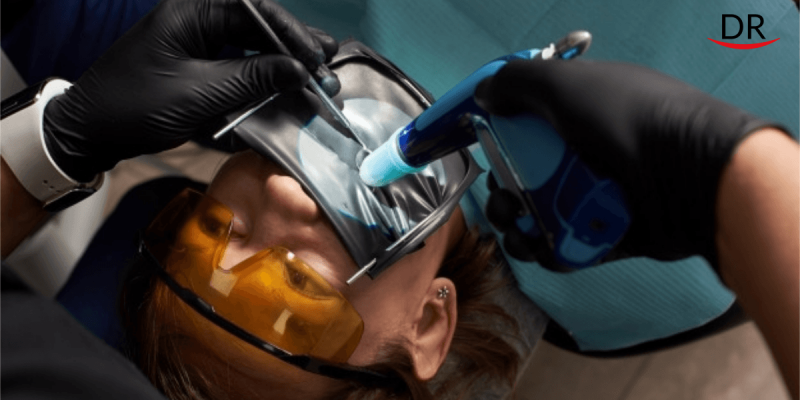Introduction
Dentistry requires the operator to spend long hours working in static postures. When ergonomics is applied in dentistry, one of the most discussed theme is the working posture of the dentist. The special attention on this topic is because of the widely recognized and accepted fact that posture is the key to preventing musculoskeletal disorders.
In dentistry, the working position represented by the spatial arrangement of the dentist’s entire body around the patient must be distinguished. This differentiation is useful to understand the working conditions.
The ideal posture of a dentist gives him –
- optimal working conditions (access, visibility and control in the mouth) and
- physical and psychological comfort throughout the execution of the clinical acts.
A good posture provides the dentist more working energy, a reduced stress level, increased comfort, lack of pain/muscular tension, and a lower risk for therapeutical errors.
A bad posture induces premature fatigue, pain, stress and a negative attitude to work, high-risk for musculoskeletal disorders and a poor quality of work. 1
Our unavoidable ‘Static Posture’ – Problems & Solutions
Prolonged static postures are strongly incriminated in the etiology of musculoskeletal disorders and therefore they deserve a special attention. Sitting on the chair for a long time involves the activation of paravertebral muscles and a substantial ‘charging’ of the lumbar curvature of spine higher than standing . To maintain a posture for a long time, including a balanced posture, predominantly involves a static muscular effort. The static work is more tiring than the dynamic work though it requires lower oxygen consumption. During static work , a large number of impulses from proprioceptors of muscles and tendons reach the same place, meaning a continuous long time excitation of cerebral cortex nerve centers. This mechanism explains why the static work is more tiring than the dynamic work .
Although we cannot avoid the static posture we can try and reduce the stress by reducing the time spent in the static posture . This can be achieved by –
- Creating an ergonomic working environment
- Using specialised chairs meant for ergonomic benefits
- Incorporating the classes of motion
- Including the nine essential elements for a good ergonomic operatory design
- The use of magnification especially the dental operating microscope along with rubberdam isolation
This article focuses on the role of rubber dam isolation in ergonomics both with and without magnification.
First let us understand –
How magnification helps in ergonomics
Any device that enhances or improves a clinician’s resolving power is extremely beneficial in producing precision dentistry. Restorative dentists, periodontists, and endodontists routinely perform procedures requiring resolution well beyond the 0.2- mm limit of human sight. Crown margins, scaling procedures, incisions, root canal orifice location, caries removal, furcation and perforation repair, post placement or removal, and bone/soft tissue grafting procedures are only a few of the procedures that demand resolution well beyond the 0.2-mm limit. Hence without enhanced vision, the operator has a natural tendency of a head tilt for better visibility of the area of work. 2

Practical ergonomic problems encountered in magnification
Working with a pair of loupes or a dental operating microscope requires the operator to go through a deep learning curve, learning to adapt oneself to the magnified field,as against regular vision in the surrounding environment. Two practical problems are encountered in magnification, which in turn affects ergonomics. These are –
- Stabilising the mouth mirror for indirect vision in magnification.
This not only puts tremoundous pressure on the muscles stabilising the static posture, but also on the musculature stabilising the mouth mirror handle for long period of time.
- Magnification of hand movements.
Working under operating microscope brings the clinician into the realm where even slight hand movements are disruptive and physiologic hand tremor is a problem.This increases the risk of musculo-skeletal disorders.
When a dentist first starts to use a surgical microscope, he/she will immediately recognize that one of the major hindrances is mouth mirror placement. After placing the rubber dam, the mirror has to be placed away from the tooth but within the confines of the rubber dam at an angle of 45°. If the mirror is placed too close to the tooth, it hinders instrumentation requiring readjustment of the mirror. This readjustment in turn requires adjustments which makes the entire procedure frustrating and time consuming for the dentist.
Another problem encountered is the trembling of the operator’s or the assistant’s hand holding the mirror, causing movement of the mouth mirror. Although the trembling could be in terms of tenths of a millimeter, it could lead to the loss of high definition and clarity of the image effecting the quality of the treatment. 3

The role of rubber dam in improving ergonomics both with and without dental operating microscope
The placement of a rubber dam not only gives clear visibility of the operating field but also helps stabilise the mouth mirror at appropriate angle and distance due to stabilisation of the mirror with the rubber dam clamp in many of the clinical situations. This eases the muscles stabilising the mouth mirror significantly.
The time lost in attempts to stablise and visualise accurately is significantly reduced with the use of rubberdam due to the excellent isolation as well ability to stabilise the mouth mirror with minimum effort.
Rubberdam eliminates the interference of the tongue on the the fingers holding the mouth mirror and thereby helps in a stable indirect vision.


In order to understand this concept better, please see this short video below:
You can read about benefits of rubber dam isolation in COVID era here.
References
1.The dentist’s operating posture – ergonomic aspects
C Pîrvu,* I Pătraşcu,** D Pîrvu,** and C Ionescu**
Published online 2014 Jun 25.
2. The Use of the Operating Microscope in Endodontics Gary B. Carr, DDS, Carlos A.F. Murgel, DDS, PhD
Dental clinics of North America,2010,Apr;54(2):191-214
3. An innovative approach in microscopic endodontics
Sunandan Mittal, Tarun Kumar, Jyotika Sharma, and Shifali Mittal
J Conserv Dent. 2014 May-Jun; 17(3): 297–298.




















Comments